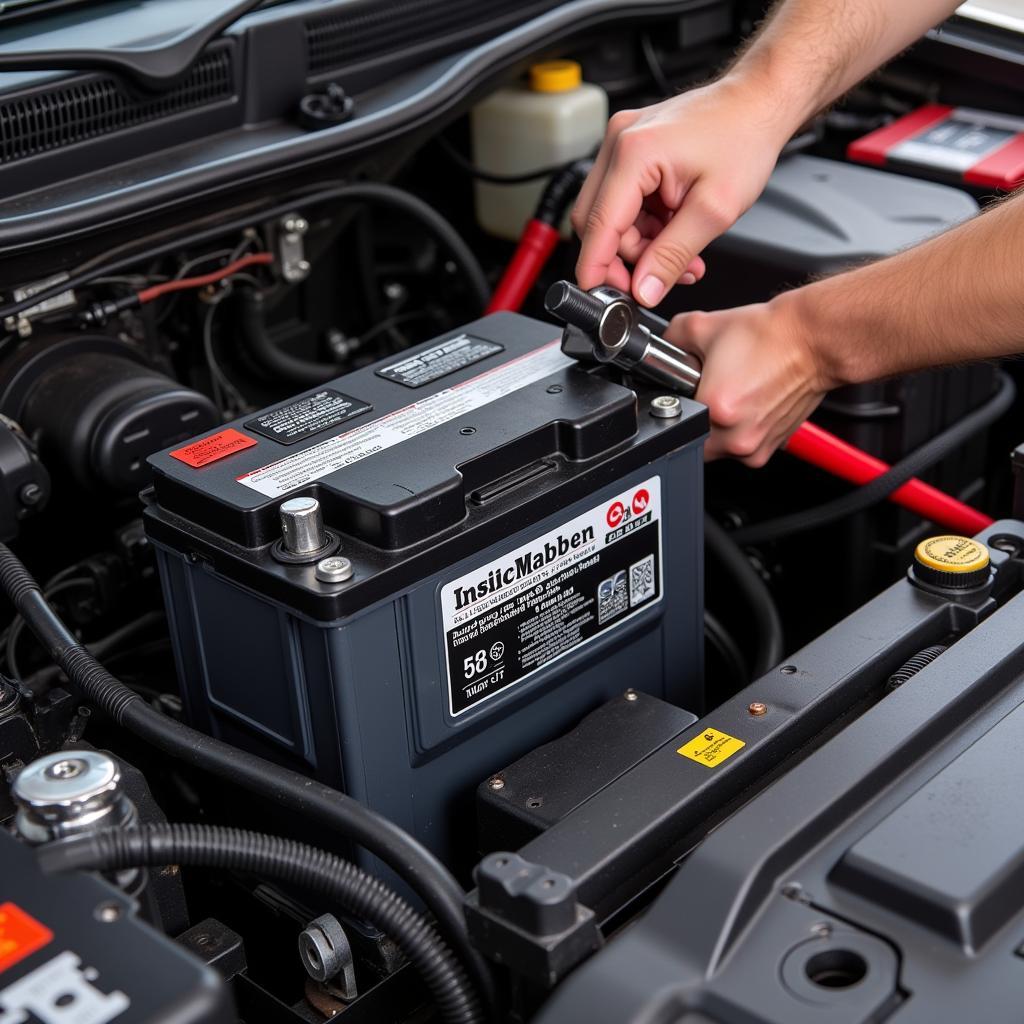The insistent chime and flashing light of a seat belt warning in your 2001 Ford B3000 can be a nuisance, especially if you’ve already buckled up. While prioritizing safety is paramount, understanding how to address a potentially faulty warning system is essential. This article delves into the common causes of a malfunctioning 2001 B3000 stop seat belt warning and provides a comprehensive guide to troubleshooting and resolving the issue.
Understanding the Seat Belt Warning System
Before diving into troubleshooting, it’s crucial to grasp how the system operates. The 2001 B3000 utilizes a simple yet effective system comprising a seat belt buckle sensor and a warning module. When you fasten your seat belt, the buckle sensor engages, signaling the module to cease the warning chime and light. Conversely, if the sensor fails or the module encounters issues, the warning may persist even when you’re properly buckled.
Common Causes of a Malfunctioning Warning
Several factors can contribute to a malfunctioning 2000 B3000 stop seat belt warning:
-
Faulty Seat Belt Buckle Sensor: The most prevalent culprit is a malfunctioning sensor within the buckle assembly. Over time, wear and tear, dirt accumulation, or spilled liquids can disrupt its functionality, leading to inaccurate signals.
-
Wiring Issues: The wiring harness connecting the buckle sensor to the warning module can become frayed, corroded, or damaged, disrupting the flow of signals.
-
Defective Warning Module: While less common, a faulty warning module can also trigger a persistent warning.
Troubleshooting Your 2001 B3000 Seat Belt Warning
Follow these steps to diagnose and address the issue:
-
Check the Seat Belt Buckle: Begin by inspecting the buckle and its surrounding area for visible damage, debris, or foreign objects. Ensure the buckle latches securely. If you notice any dirt or debris, carefully clean the buckle using a can of compressed air or a cotton swab dipped in isopropyl alcohol.
-
Inspect the Wiring: Carefully examine the wiring harness beneath the seat for any signs of damage, such as cuts, frays, or loose connections. If you discover any issues, consult a qualified mechanic or an auto electrician to repair or replace the wiring.
-
Test the Seat Belt Buckle Sensor: If the buckle and wiring appear intact, you can test the sensor’s functionality using a multimeter. Refer to your vehicle’s wiring diagram to identify the correct terminals for testing. A functioning sensor should show a change in resistance when the buckle is fastened and unfastened.
“Testing the buckle sensor with a multimeter is a straightforward process,” says John Davis, a seasoned automotive electrician. “However, if you’re not comfortable working with electrical components, it’s best to leave this step to a professional.”
-
Inspect the Warning Module: Locating the warning module can vary between vehicle models. Consult your owner’s manual or online resources to determine its placement in your 2001 B3000. Visually inspect the module for any signs of damage or loose connections. However, diagnosing internal module issues typically requires specialized diagnostic tools, making it advisable to seek assistance from a qualified mechanic.
Seeking Professional Assistance
While these steps can help troubleshoot common issues, persistent problems may necessitate the expertise of a qualified mechanic or an auto electrician. They possess the knowledge and tools to diagnose complex electrical problems and ensure the proper functioning of your vehicle’s safety systems.
Conclusion
Addressing a 2001 B3000 stop seat belt warning is crucial for maintaining both your safety and the proper functioning of your vehicle’s safety systems. By understanding the common causes and following the outlined troubleshooting steps, you can effectively diagnose and potentially resolve the issue. However, always prioritize safety and don’t hesitate to seek professional assistance if the problem persists.

